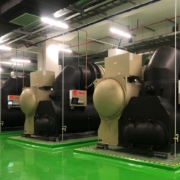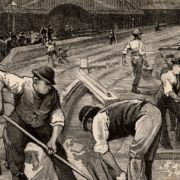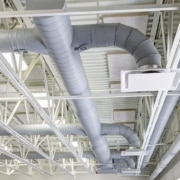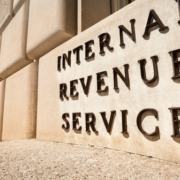The Opportunity for Larger §179D Deductions Without Prevailing Wage Qualification
Once of the biggest changes to occur with IRC Section 179D and 45L credits is the use of prevailing wage and apprentice-based project labor, which occurred with the passage of the Inflation Reduction Act in 2022. Projects placed in service after December 31, 2022, now have a two-tiered deduction with projects meeting the prevailing wage requirements qualifying for significantly higher deduction amounts.
Prevailing wage is the concept that project laborers are paid wages and benefits not less than the “prevailing” wages for construction, alteration, or repair of a similar character in a particular area. Generally speaking, this is the standard union wage for these occupations. Prevailing wage rates are determined by the Department of Labor, which factors both region and role into the calculation. Qualifying apprenticeships are calculated via a percentage of project labor hours.
The difference in deduction tiers is significant, particularly when compared to the previous tax deductions. For projects meeting the prevailing wage requirements, a 50% reduction against the ASHRAE standard is now 25% and yields a §179D Tax Deduction of $2.50/SF. For every 1% of additional reduction above 25% it provides an additional $0.10/SF of deduction up to $5.00/SF. Those projects that do not meet the prevailing wage requirement but still meet the 50% reduction against the ASHRAE standard now yield a §179D Tax Deduction of $0.50/SF. For every 1% of additional reduction above 25% it will provide an additional $0.02/SF of deduction up to $1.00/SF.
A Window of Opportunity
According to IRS Notice 2022-61, a facility must meet the prevailing wage and apprenticeship requirements to receive the increased credit amounts under §179D. Here is where the timing gets a little interesting. This notice was published in the Federal Register on November 30, 2022, meaning that prevailing wage requirements first apply to construction projects starting on or after January 30, 2022.
A facility project that started prior to January 30, 2022, can still quality for the §179D higher-tier tax deduction without using prevailing wage labor, based purely on the construction start date. This makes the ability to establish when construction has begun critical for any property owner hoping to take advantage of this window. If this potentially applies to your project, you might want to take a closer look into your records and check your eligibility.
According to the IRS, there are two methods that can be used to established when facility construction begins:
- Physical Work Test – by starting physical work of a “significant nature,” with the property owner maintains a continuous program of construction
- Five Percent Safe Harbor – in which the property owner has paid or incurred five percent more of the total cost of the facility
The nuances of §179D can be challenging to understand, particularly with the wave of changes that occurred with the passage of the Inflation Reduction Act. This illustrates the ongoing importance of engaging with reputable and knowledgeable firms such as Walker Reid to avoid the consequences of erroneously taking a deduction that your project does not qualify for. This can result in audits, IRS penalties, tax repayment, and operational disruption. Our priority at Walker Reid is to maximize incentives for our clients while strictly adhering to the reasonable interpretation of tax law. The complexities of prevailing wage as it applies to §179D and §45L tax deductions are particularly challenging, and we are here to provide guidance.
David Diaz, a partner at Walker Reid Strategies, a licensed engineering firm specializing in §179D studies and §45L certifications, is an expert in energy efficiency and tax services. You can find more information about him and his insights at www.walkerreid.com and through webinars. You can also reach him at ddiaz@walkerreid.com for more details.










